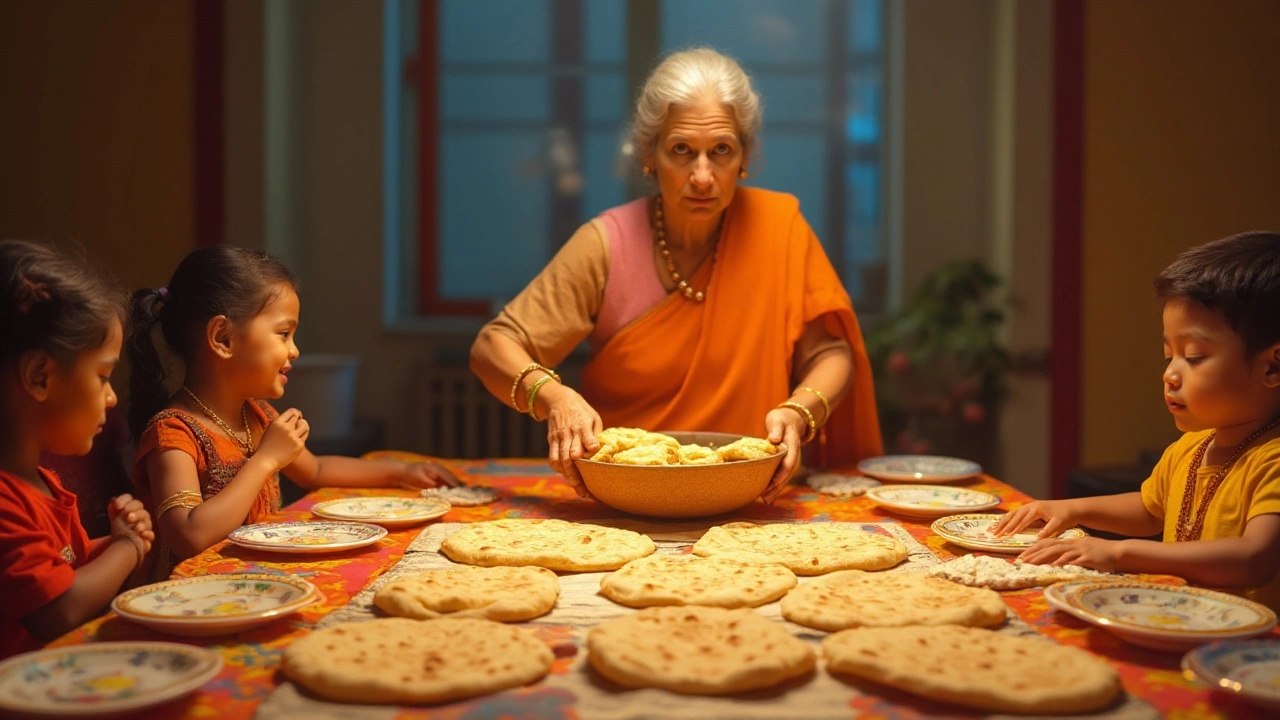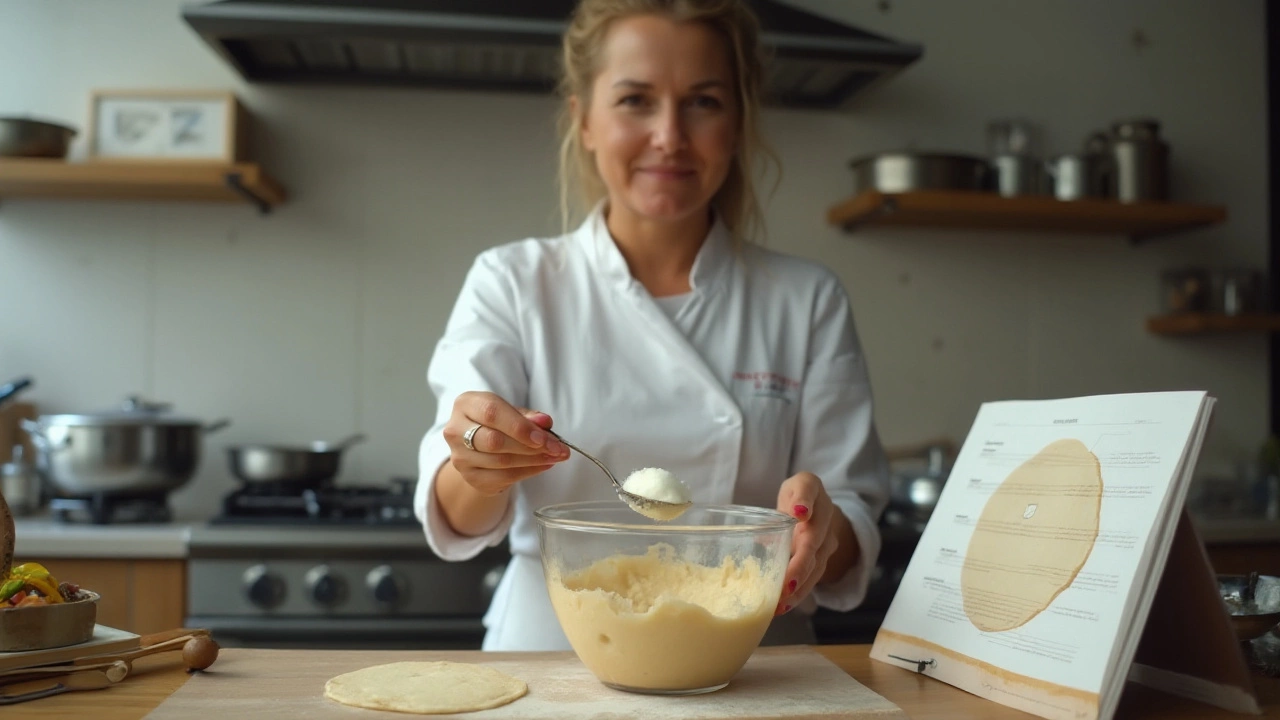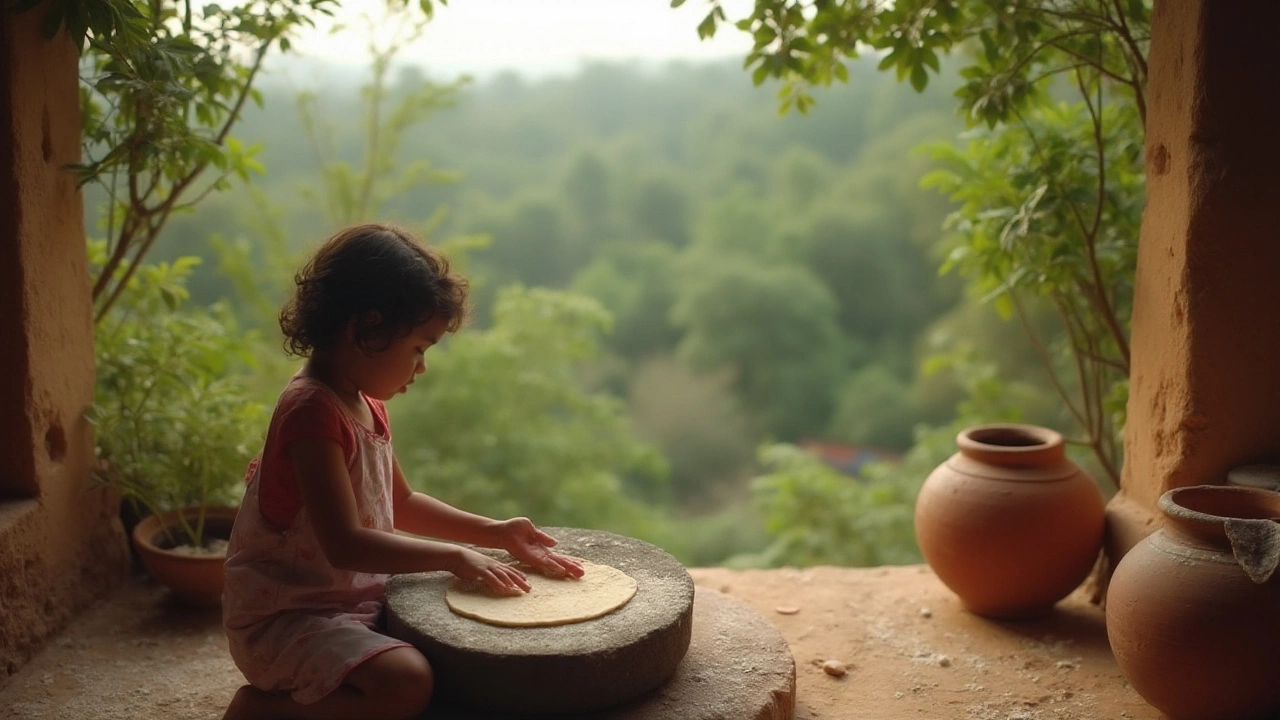Bread in its myriad forms has long been the heart of many cultures' culinary traditions, and in South Asia, roti takes a central stage. Known for its simplicity and versatility, mastering the art of soft roti is both an art and a science. Many home cooks and food enthusiasts have often pondered the various techniques and secret ingredients that can transform their roti from good to heavenly.
Among the kitchen staples often purported to enhance roti softness is baking soda. But how effectively does baking soda work, and what should one be careful about when using it? Roaming about the chemistry of ingredients might seem intimidating, but it's simpler than you think. Baking soda, or sodium bicarbonate, can indeed play a role in your quest for fluffy, tender rotis. Dive into these insights, and learn how to wield your ingredients with flair to craft rotis that are soft to the touch and delightful to the taste buds.
- The Science Behind Baking Soda
- Using Baking Soda in Roti Dough
- Alternatives to Baking Soda
- Tips for Perfect Soft Roti
The Science Behind Baking Soda
Baking soda, or sodium bicarbonate, is more than just a staple found in household pantries; it’s a marvel of chemistry that works wonders in different culinary applications. When it comes to roti, the use of baking soda isn't about making it rise, but rather ensuring that it becomes tender and pliable. This compound is an alkaline substance, which can affect the protein structure within the dough. The magic happens when moisture and heat trigger the release of carbon dioxide, introducing a leavening effect that subtly changes the dough’s texture without making it rise excessively like yeast would. This chemical reaction is a delicate dance, one that encourages the gluten strands in the flour to relax, leading to a softer and more enjoyable flatbread.
The use of baking soda must be judicious, as too much can offset the pH balance of the dough, leading to an undesirable soapy flavor that lingers on the palate. A small amount goes a long way in creating the irresistible texture that makes roti a comforting and familiar part of meals. Interestingly, the addition of an acidic component such as yogurt can enhance the reaction of baking soda. This common practice mirrors the culinary principle used in countless baking recipes, providing an opportunity for the roti to reach its softest potential. In the realm of South Asian cuisine, understanding the chemistry behind ingredients is integral to mastering traditional methods and achieving exciting results in modern kitchens.
"Baking soda is often a humble hero in the kitchen, capable of elevating the texture of bread, even those as simple as roti," remarked culinary scientist Shirley Corriher, whose work elucidates the connections between science and gastronomy.
Roti makers have long experimented with their methods, honing in on how tiny adjustments impact the final product. The moisture content of the dough, for example, plays a critical role when combined with baking soda. While attaining the perfect dough might seem like a skill passed down through generations, it’s primarily about understanding these basic ingredients. The absorption rate of flour varies, making it essential for cooks to gauge the right ratio of water and flour. This attention to detail complements the action of baking soda, resulting in soft roti that remains fluffy even as it cools, an essential trait for versatility in dishes. By mastering these interactions, home cooks can confidently wield the might of chemistry in their everyday cooking, bringing a professional touch to their kitchen creations.

Using Baking Soda in Roti Dough
Turning the humble roti into a softer, more satisfying culinary delight can sometimes be as simple as adding a spoonful of baking soda to your dough mixture. But why does this make such a big difference? It all comes down to the chemistry of sodium bicarbonate, an ingredient known for its ability to act as a leavening agent. When combined with the moisture in dough, baking soda releases carbon dioxide gas, which helps create pockets of air. This results in a lighter, softer bread texture that might recall those fluffy loaves of bread that rise to the occasion. However, one should not overlook the importance of balance. Too much baking soda can lead to an undesirably bitter taste, altering the very essence of what makes roti delectable.
Interestingly, the role of baking soda extends beyond simply aerating the dough. There is a curious reaction that occurs when it interacts with gluten—the protein that gives dough its elasticity and structure. A controlled amount of baking soda can weaken gluten development, leading to a tender bite. But it’s a dance of precision; a pinch too much could mean roti that’s too crumbly to handle comfortably. As with many culinary techniques, testing and experience are key. Start with half a teaspoon of baking soda per cup of flour and adjust based on your findings and personal preference. As Nisha Madhulika, a respected culinary expert, once said,
“A little tweak in the combination of ingredients can bring about a remarkable change in traditional recipes.”
Exploring this adjustment doesn't just stop at how much baking soda you introduce to the roti dough. Consider the type of flour you are using as well. While the classic recipe calls for whole wheat flour, experimenting with a mix, including all-purpose flour, can yield different textures when paired with roti. The flour’s protein content interacts uniquely with baking soda, adding to the intricacies of achieving that perfect softness. Another noteworthy consideration is the environment in which you’re making your dough. Humidity and temperature play subtle roles in the texture and flavor of the finished product, challenging home bakers to sometimes adjust ingredient ratios slightly depending on the season or climate.
Integrating baking soda into your dough is more than just a procedural step; it is a gateway into understanding the marriage between science and art in cooking. The application isn’t limited to rotis either; the principles can easily extend to other flatbreads where a softer texture is desired. Ultimately, the pursuit of the perfect soft roti invites creativity and patience, ensuring that each family meal is filled with not just flavor, but an enduring sense of warmth and tradition.

Alternatives to Baking Soda
While baking soda often emerges as a popular choice to enhance the softness of roti, culinary tradition and innovation alike offer a variety of other methods that can yield equally delightful results. One of the most time-tested alternatives is the use of yogurt or buttermilk. The natural acidity present in these ingredients reacts with the wheat proteins and tenderizes the dough. This interaction is similar to what baking soda does when combined with an acid, offering fluffy and soft flatbreads without the need for chemical leavening agents.
Another approach involves using a technique called autolyse, where the dough is allowed to rest before kneading. This simple practice helps to hydrate the flour, encouraging gluten development which can translate to softer and pliable roti. Sometimes, cooks also add a touch of oil or ghee to the dough. This fat helps in creating layers and, when cooked, results in rotis that are luxuriously soft and rich in flavour.
Using Natural Yeast
Another viable alternative is incorporating a bit of sourdough starter. Although it takes a bit longer because of the fermentation process, sourdough adds a depth of flavor and soft texture to the roti. It introduces natural yeast into the mix, which not only aids in making the bread soft but also enriches it with complex flavors that elevate a humble meal into a gourmet experience. It's a fantastic way to harness the power of wild yeast for your daily bread needs.
For those who are keen on trying a shortcut, fruit purees such as mashed banana or applesauce can offer surprising results. They add moisture and additional softness, lending a naturally sweet flavor to the rotis. While the taste profile might differ slightly from traditional roti, those with a penchant for experimenting will find this alternative intriguing.
The key to mastering soft rotis lies not just in the ingredients, but in understanding the harmony between them. As noted chef Madhur Jaffrey famously said, "A good cook is like a sorceress who dispenses happiness." This rings true when you consider how something as simple as a slight ingredient tweak can transform a meal.
Whether you choose to delve into traditional methods or explore innovative alternatives, each approach offers its unique charm and flavor. It's all about finding what works for your palate and dietary needs. The variety of options ensures that there's always a way to enjoy soft, delicious roti without relying solely on baking soda.

Tips for Perfect Soft Roti
Creating the perfect soft roti is both a craft and a careful juggling act with ingredients and technique. The goal is to end up with a roti that is not only light and pliable but also slightly puffed with gentle brown spots. The journey begins with the right flour selection. Always opt for whole wheat flour, often labeled as 'atta' in South Asian stores. This type of flour is less refined and retains more of the bran and germ, providing a richer flavor and softer texture. To yield the best results, ensure your flour is fresh; stale flour can sabotage your efforts, leading to dense or dry rotis.
The next crucial step involves kneading the roti dough. Add a pinch of baking soda to your dough mixture, which acts as a leavening agent, helping the roti become softer. Always use warm water for kneading; it hydrates the flour better and facilitates gluten formation, contributing to the elasticity required for that perfect softness. Remember, the dough should be neither too sticky nor too stiff. Aim for a smooth, soft dough that springs back slightly when you press into it. Let the dough rest for at least 30 minutes to allow the gluten to relax. This resting period ensures the rotis roll out easily and cook evenly.
Rolling the dough into evenly shaped balls is vital. Uniformity in size ensures even cooking. Lightly flour your rolling surface and the dough balls to prevent sticking; then, gently roll each ball into a thin, even circle. While rolling, refrain from applying too much pressure as it might make the roti tough. The goal is to have a roti that is about an eighth of an inch thick, as thin roti cooks better and puffs beautifully.
Cooking the roti is perhaps the most delicate process. Heat your tawa or skillet until it's hot enough that water dances when sprinkled. Place the roti onto the hot surface, allowing it to cook for about 30 seconds until bubbles form. Flip it to the other side, letting it cook for another 30 seconds. Press gently around the edges with a spatula to encourage puffing, then flip once more, and let the roti rise. This puffing indicates successful gluten development, which soft baking soda contributes to enhancing.
"Adding a touch of baking soda can make all the difference," says culinary expert Anita Kapoor. "It's a little trick that elevates your roti from average to exceptional by enhancing the tenderness and fluffiness."
Lastly, once cooked, keep the roti warm by wrapping it in a clean kitchen towel. Storing rotis stacked can maintain their moisture and softness. Serve them immediately for the best experience, as rotis have a tendency to harden as they cool. With these guidelines, achieving the perfect soft roti is within reach for beginners and seasoned cooks alike.
